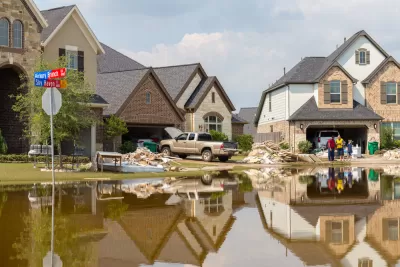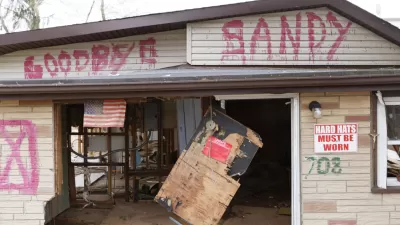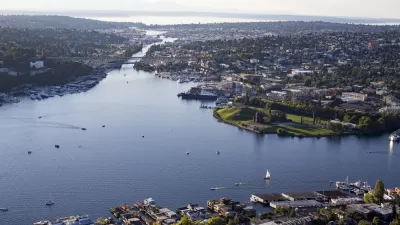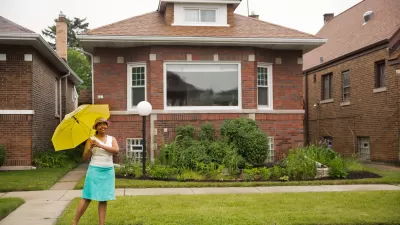The Rockefeller Foundation has cited costs and a new strategic direction to explain why it abruptly cut off the program this year. While the work may live on in some form, the move underscores the risks of relying on private funding.

"Established in 2013 by the Rockefeller Foundation in the wake of Hurricane Katrina and Superstorm Sandy, 100 Resilient Cities was born out of the idea that local governments needed help planning for disasters and combating persistent social maladies," Laura Bliss writes. With Rockefeller writing the checks, it grew into a groundbreaking effort to embed resilience into the conceptual vocabulary of local governments.
But this spring, the foundation decided to wind the program down. "For local governments, the whiplash may be a reminder of the risks of relying of private dollars to create public policies," Bliss writes.
Some elements of Rockefeller's resilience work may survive. The Rockefeller Foundation is helping bankroll the Adrienne Arsht-Rockefeller Foundation Resilience Center, for example, and it has "confirmed that it may keep some elements of the 100 Resilient Cities program alive."
As for why Rockefeller pulled the plug, the rationale partly has to do with cost: "while academic research supports the theory of building urban resilience through institutional change, it was challenging to measure short-term results directed by the program." Rockefeller's president Raj Shah also wants to steer the foundation in a different direction, prioritizing measurable outcomes in areas like global health.
100 Resilient Cities' president, Michael Berkowitz, has "told staff that he and a group of soon-to-be-former 100RC officers were preparing to start a new nonprofit with the mission of helping cities implement resilience projects." A new venture would work on a project-by-project basis, Bliss writes, rather than activating a network of cities. And it will draw on multiple funding sources. A formal announcement is expected this July.
FULL STORY: The Rise, Fall, and Possible Rebirth of 100 Resilient Cities

Alabama: Trump Terminates Settlements for Black Communities Harmed By Raw Sewage
Trump deemed the landmark civil rights agreement “illegal DEI and environmental justice policy.”

Planetizen Federal Action Tracker
A weekly monitor of how Trump’s orders and actions are impacting planners and planning in America.

The 120 Year Old Tiny Home Villages That Sheltered San Francisco’s Earthquake Refugees
More than a century ago, San Francisco mobilized to house thousands of residents displaced by the 1906 earthquake. Could their strategy offer a model for the present?

Ken Jennings Launches Transit Web Series
The Jeopardy champ wants you to ride public transit.

BLM To Rescind Public Lands Rule
The change will downgrade conservation, once again putting federal land at risk for mining and other extractive uses.

Indy Neighborhood Group Builds Temporary Multi-Use Path
Community members, aided in part by funding from the city, repurposed a vehicle lane to create a protected bike and pedestrian path for the summer season.
Urban Design for Planners 1: Software Tools
This six-course series explores essential urban design concepts using open source software and equips planners with the tools they need to participate fully in the urban design process.
Planning for Universal Design
Learn the tools for implementing Universal Design in planning regulations.
Clanton & Associates, Inc.
Jessamine County Fiscal Court
Institute for Housing and Urban Development Studies (IHS)
City of Grandview
Harvard GSD Executive Education
Toledo-Lucas County Plan Commissions
Salt Lake City
NYU Wagner Graduate School of Public Service





























